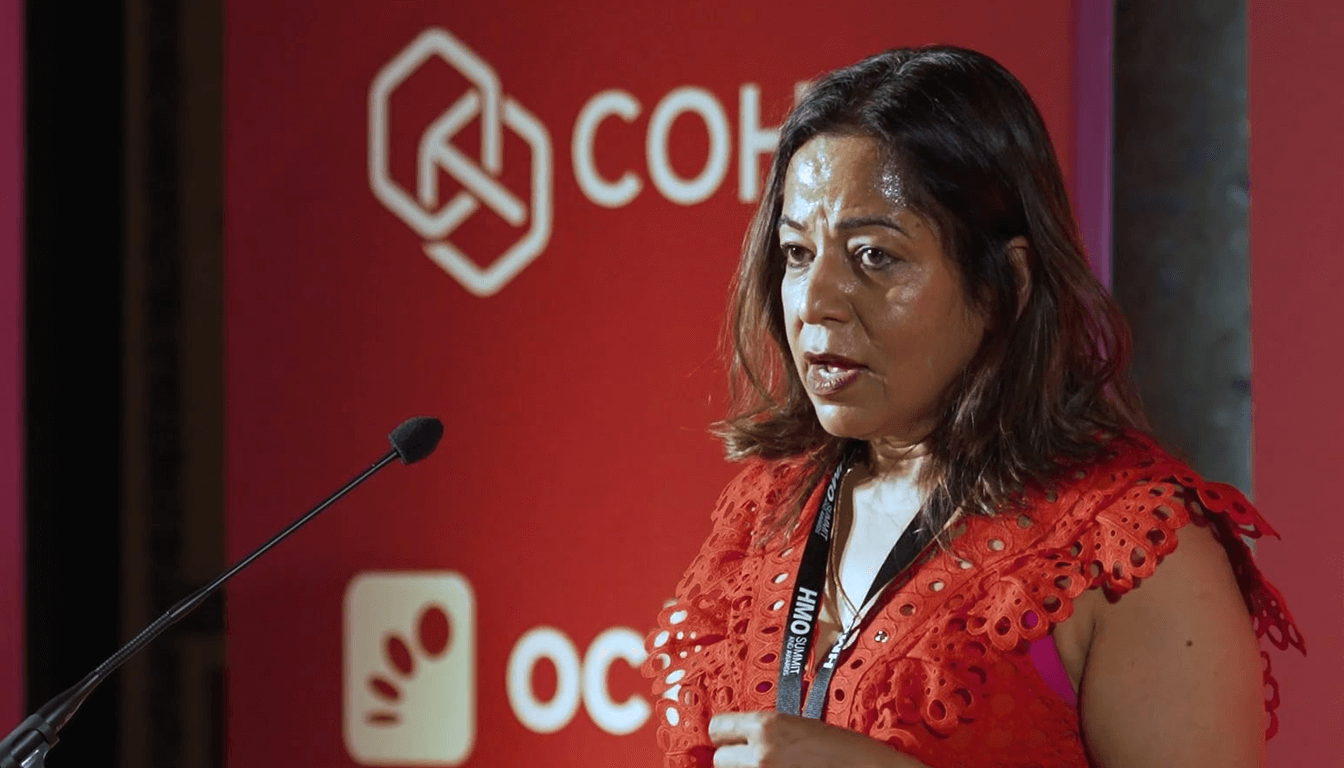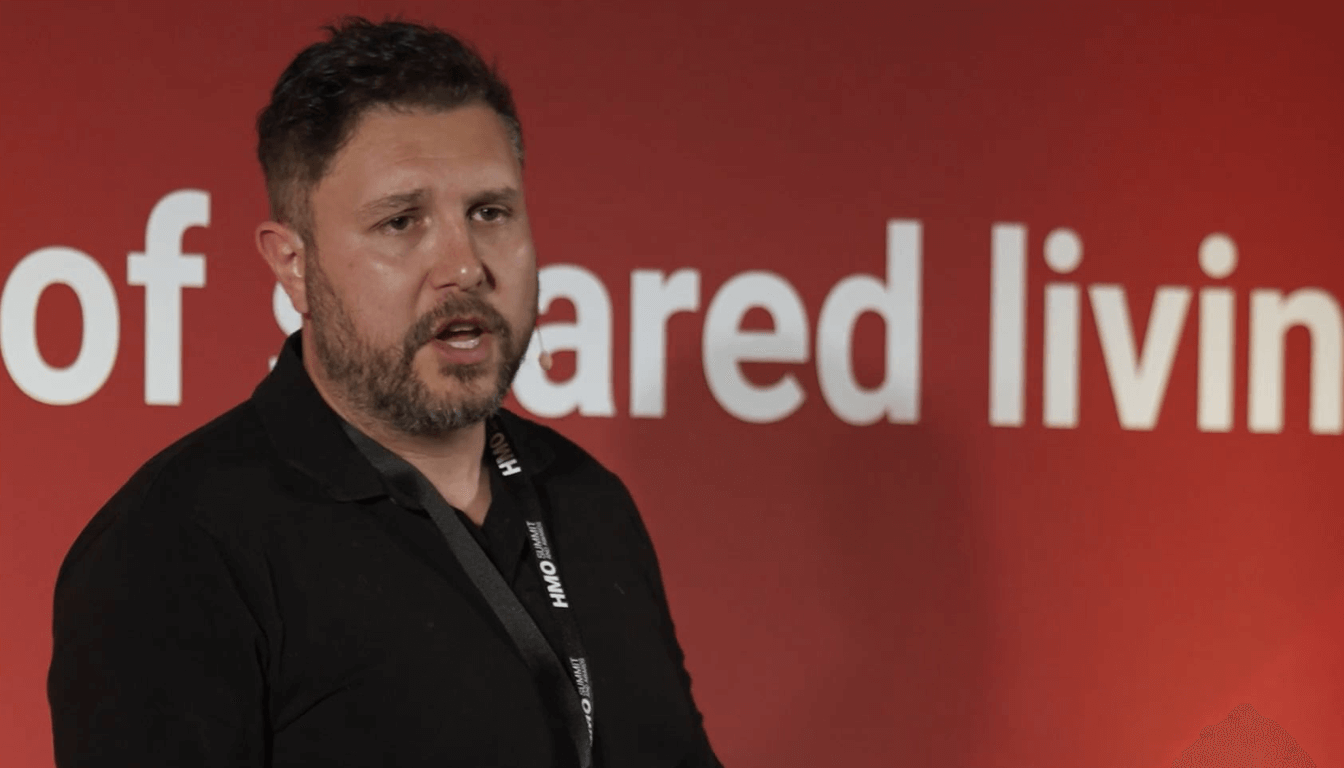When operators talk about maximising yield and cutting voids, the conversation often begins and ends with numbers: rent per room, refurbishment cost, time-to-let. Aarti Takiar redirected that conversation at the HMO Summit by asking an obvious but overlooked question: what if the best way to increase returns is to design homes people want to stay in,not just live in? Her argument is both simple and strategic. Luxome, the business she describes, builds stylish, design-led homes for students and young professionals in the Northwest, and they do everything themselves: sourcing, renovating, letting and managing. The result is not only beautiful interiors but a deliberate focus on the human systems that make those interiors feel like home. The payoff is measurable: longer tenancies, far fewer voids, stronger rents and a steady stream of referrals.
Aarti’s talk is not a collection of aspirational slogans. It is a practical, step-by-step playbook for creating community-first HMOs that deliver superior financial performance because residents stay, refer and treat the property like their home. Below I translate her live remarks into a usable operating narrative you can apply to your own portfolio.
Start with people, not rooms
Luxome’s first principle is that tenants are clients. That sounds obvious until you reflect on how many letting processes treat people like line items on a spreadsheet. Aarti’s approach flips that: getting the personal relationships right is the business advantage. Early on, she and her husband did everything themselves,the viewings, the move-ins, the complaints. Over time they learned the most important hires are not necessarily the cheapest or the most efficient; they are the empathetic property managers who understand tenant needs and invest in relationships.
Empathy cannot be trained like admin tasks; it needs to be found and valued. When your property manager cares about the residents’ lives,their work patterns, study schedules, social needs,they do more than fill rooms. They create stability. They notice the quiet person who needs support, they make introductions that reduce friction, and they de-escalate before issues turn into vacancies. Treat people with respect and design your team around emotional intelligence as well as skill.
Recruit for compatibility, not speed
One of the most counterintuitive points Aarti makes is that filling rooms one at a time, prioritising compatibility, produces better outcomes than rapid full-house lettings. Luxury styling and design draw attention, but the community glue comes from matching lifestyles: second-year students who want quiet study time, early-career professionals who prefer Friday-night socialising, shift workers who need sleep during the day. When housemates bond, they anchor one another; they look after the property and encourage each other to stay. That’s how waiting lists and organic referrals form.
This philosophy means sometimes you wait. It means saying no to the tenant who would fill the room tomorrow but would disharmony the week after. In practice, that choice reduces churn and maintenance costs. A house that works socially is easier and cheaper to manage than one that constantly needs repair, mediation and policing. The financial logic is simple: a slightly slower fill rate followed by longer average tenancy generates higher lifetime value per room.
Prepare residents for shared living from day one
A great home starts before a tenant walks through the door. Aarti explained how Luxome’s welcome pack and residence handbook set expectations early. This is not a generic “rules” booklet; it’s a carefully crafted primer that introduces the property manager (so tenants recognise her at first sight), explains house rules, shows router and meter locations, and answers the recurring questions that otherwise turn into late-night calls. The welcome process includes meeting new tenants at the property rather than dropping keys in a box,the difference between a transactional interaction and a human welcome.
When tenants are shown around, briefed on cleaning rotas, and introduced to the existing household dynamic, settling happens faster and conflicts are less likely. A house where new residents are invited into the existing group,sometimes with current tenants taking them for drinks,creates belonging. That belongs becomes the most powerful retention tool.
Co-create rules and listen constantly
Luxome’s best practices do not come from a top-down ledger of regulations. They are co-created: outgoing tenants are asked what would have made their stay better and those suggestions feed into the next tenancy’s handbook. Aarti uses surveys and anonymous feedback to capture honest impressions and then acts on what she learns. This iterative feedback loop creates trust because tenants see their input translated into change. It also reveals early indicators of house stress that, if handled quickly, prevent escalation.
Being genuinely open to criticism requires leadership humility. Taking bad feedback “on the chin,” breathing, reflecting and improving is how you build a culture of continuous service improvement. That service orientation reduces maintenance complaints because problems are often prevented by clear information and proactive upkeep,not just fixed once broken.
Design for how people live together, not how many rooms you can squeeze in
There is always a temptation to maximise bed count, but Aarti warns that squeezing rooms without regard to communal space is a false economy. The living room must allow a group to gather; the kitchen must provide sufficient shared bench and cupboard space; hallways need durable finishes. Luxome budgets for high-use appliances and chooses materials that stand up to intensive wear. White paint in high-traffic areas, for example, makes touch-ups easier and less disruptive than trying to match an idiosyncratic colour that ages badly.
Another practical point from the talk: local HMO rules matter and can be very particular. Luxome learned the hard way when a council clerk flagged sink sizing that necessitated bathroom redesigns. Compliance takes planning and humility; it is cheaper to follow local quirks than to retrofit. Build relationships with council officers to understand the quirks before you ship the job.
Operational design: proactive systems, not just reactive fixes
The technical backbone of a community-first home is a smooth, proactive operations system. Luxome uses Coho for maintenance reporting and an after-hours service (PropCall in Aarti’s case) to ensure tenants can switch off and rely on a clear support chain. The combination,a good reporting platform plus outsourced out-of-hours support,means fewer escalations, faster fixes and a quieter life for managers. Those operational efficiencies reduce churn because tenants feel seen and supported.
Recording and benchmarking service metrics,time to resolve a maintenance call, average response time to tenant enquiries, and referral rates,lets you compare the health of houses over time and identify where to invest in improvements.
The commercial results: longer tenancies and higher yields
When you build homes people love, the financials follow. Aarti reports longer average tenancies, much lower turnover, high referral rates and waiting lists. That stability reduces refurbishment frequency and marketing costs and increases yield over the lifecycle of each room. A community-first approach is not a feel-good strategy; it is a yield optimisation strategy that compounds over time as your homes develop reputations and referral networks.
The leadership lesson: steward houses, don’t just own them
Aarti’s final message is a cultural one. Letting homes flourish requires stewarding relationships at scale. That stewardship means hiring for empathy, setting clear expectations early, designing spaces for shared life, automating and outsourcing what you can so humans can do the relational work, and relentlessly listening for ways to improve. When you treat tenants with respect and create spaces you’d be proud to live in, you generate business outcomes that matter: fewer voids, better rent levels and a defensible brand in a competitive market.
When operators talk about maximising yield and cutting voids, the conversation often begins and ends with numbers: rent per room, refurbishment cost, time-to-let. Aarti Takiar redirected that conversation at the HMO Summit by asking an obvious but overlooked question: what if the best way to increase returns is to design homes people want to stay in,not just live in? Her argument is both simple and strategic. Luxome, the business she describes, builds stylish, design-led homes for students and young professionals in the Northwest, and they do everything themselves: sourcing, renovating, letting and managing. The result is not only beautiful interiors but a deliberate focus on the human systems that make those interiors feel like home. The payoff is measurable: longer tenancies, far fewer voids, stronger rents and a steady stream of referrals.
Aarti’s talk is not a collection of aspirational slogans. It is a practical, step-by-step playbook for creating community-first HMOs that deliver superior financial performance because residents stay, refer and treat the property like their home. Below I translate her live remarks into a usable operating narrative you can apply to your own portfolio.
Start with people, not rooms
Luxome’s first principle is that tenants are clients. That sounds obvious until you reflect on how many letting processes treat people like line items on a spreadsheet. Aarti’s approach flips that: getting the personal relationships right is the business advantage. Early on, she and her husband did everything themselves,the viewings, the move-ins, the complaints. Over time they learned the most important hires are not necessarily the cheapest or the most efficient; they are the empathetic property managers who understand tenant needs and invest in relationships.
Empathy cannot be trained like admin tasks; it needs to be found and valued. When your property manager cares about the residents’ lives,their work patterns, study schedules, social needs,they do more than fill rooms. They create stability. They notice the quiet person who needs support, they make introductions that reduce friction, and they de-escalate before issues turn into vacancies. Treat people with respect and design your team around emotional intelligence as well as skill.
Recruit for compatibility, not speed
One of the most counterintuitive points Aarti makes is that filling rooms one at a time, prioritising compatibility, produces better outcomes than rapid full-house lettings. Luxury styling and design draw attention, but the community glue comes from matching lifestyles: second-year students who want quiet study time, early-career professionals who prefer Friday-night socialising, shift workers who need sleep during the day. When housemates bond, they anchor one another; they look after the property and encourage each other to stay. That’s how waiting lists and organic referrals form.
This philosophy means sometimes you wait. It means saying no to the tenant who would fill the room tomorrow but would disharmony the week after. In practice, that choice reduces churn and maintenance costs. A house that works socially is easier and cheaper to manage than one that constantly needs repair, mediation and policing. The financial logic is simple: a slightly slower fill rate followed by longer average tenancy generates higher lifetime value per room.
Prepare residents for shared living from day one
A great home starts before a tenant walks through the door. Aarti explained how Luxome’s welcome pack and residence handbook set expectations early. This is not a generic “rules” booklet; it’s a carefully crafted primer that introduces the property manager (so tenants recognise her at first sight), explains house rules, shows router and meter locations, and answers the recurring questions that otherwise turn into late-night calls. The welcome process includes meeting new tenants at the property rather than dropping keys in a box,the difference between a transactional interaction and a human welcome.
When tenants are shown around, briefed on cleaning rotas, and introduced to the existing household dynamic, settling happens faster and conflicts are less likely. A house where new residents are invited into the existing group,sometimes with current tenants taking them for drinks,creates belonging. That belongs becomes the most powerful retention tool.
Co-create rules and listen constantly
Luxome’s best practices do not come from a top-down ledger of regulations. They are co-created: outgoing tenants are asked what would have made their stay better and those suggestions feed into the next tenancy’s handbook. Aarti uses surveys and anonymous feedback to capture honest impressions and then acts on what she learns. This iterative feedback loop creates trust because tenants see their input translated into change. It also reveals early indicators of house stress that, if handled quickly, prevent escalation.
Being genuinely open to criticism requires leadership humility. Taking bad feedback “on the chin,” breathing, reflecting and improving is how you build a culture of continuous service improvement. That service orientation reduces maintenance complaints because problems are often prevented by clear information and proactive upkeep,not just fixed once broken.
Design for how people live together, not how many rooms you can squeeze in
There is always a temptation to maximise bed count, but Aarti warns that squeezing rooms without regard to communal space is a false economy. The living room must allow a group to gather; the kitchen must provide sufficient shared bench and cupboard space; hallways need durable finishes. Luxome budgets for high-use appliances and chooses materials that stand up to intensive wear. White paint in high-traffic areas, for example, makes touch-ups easier and less disruptive than trying to match an idiosyncratic colour that ages badly.
Another practical point from the talk: local HMO rules matter and can be very particular. Luxome learned the hard way when a council clerk flagged sink sizing that necessitated bathroom redesigns. Compliance takes planning and humility; it is cheaper to follow local quirks than to retrofit. Build relationships with council officers to understand the quirks before you ship the job.
Operational design: proactive systems, not just reactive fixes
The technical backbone of a community-first home is a smooth, proactive operations system. Luxome uses Coho for maintenance reporting and an after-hours service (PropCall in Aarti’s case) to ensure tenants can switch off and rely on a clear support chain. The combination,a good reporting platform plus outsourced out-of-hours support,means fewer escalations, faster fixes and a quieter life for managers. Those operational efficiencies reduce churn because tenants feel seen and supported.
Recording and benchmarking service metrics,time to resolve a maintenance call, average response time to tenant enquiries, and referral rates,lets you compare the health of houses over time and identify where to invest in improvements.
The commercial results: longer tenancies and higher yields
When you build homes people love, the financials follow. Aarti reports longer average tenancies, much lower turnover, high referral rates and waiting lists. That stability reduces refurbishment frequency and marketing costs and increases yield over the lifecycle of each room. A community-first approach is not a feel-good strategy; it is a yield optimisation strategy that compounds over time as your homes develop reputations and referral networks.
The leadership lesson: steward houses, don’t just own them
Aarti’s final message is a cultural one. Letting homes flourish requires stewarding relationships at scale. That stewardship means hiring for empathy, setting clear expectations early, designing spaces for shared life, automating and outsourcing what you can so humans can do the relational work, and relentlessly listening for ways to improve. When you treat tenants with respect and create spaces you’d be proud to live in, you generate business outcomes that matter: fewer voids, better rent levels and a defensible brand in a competitive market.









